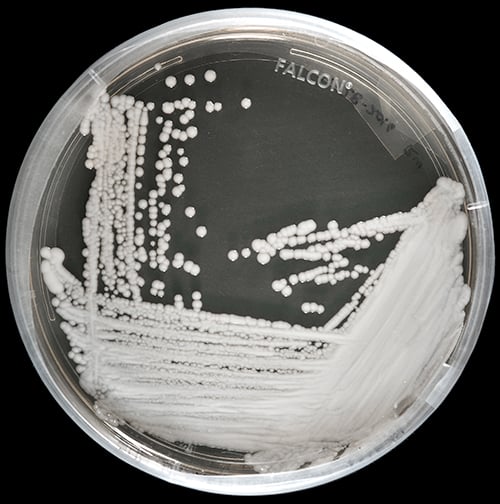Deadly Fungi: The Emerging Superbug Crisis

Table of Contents
The Rise of Antifungal Resistance
The increasing prevalence of deadly fungi resistant to antifungal drugs is a serious concern. This resistance renders many life-saving treatments ineffective, leading to prolonged illness, higher mortality rates, and increased healthcare costs.
Mechanisms of Resistance
Fungi develop resistance through several mechanisms:
- Target Modification: Fungi alter the structure of the target site for antifungal drugs, making the drugs less effective.
- Efflux Pumps: Fungi produce pumps that actively expel antifungal drugs from their cells, reducing the drug's intracellular concentration.
- Altered Cell Wall Synthesis: Changes in the fungal cell wall can reduce the drug's ability to penetrate and affect the fungus.
- Enzymatic Degradation: Some fungi produce enzymes that break down antifungal drugs, rendering them inactive.
Several fungal species, including Candida auris, Aspergillus fumigatus, and Cryptococcus neoformans, have demonstrated alarmingly high rates of resistance to multiple antifungal agents.
Factors Contributing to Resistance
Several factors contribute to the rise of antifungal resistance:
- Overuse and Misuse of Antifungal Medications: Inappropriate use of antifungal drugs, both in humans and animals, accelerates the development of resistant strains.
- Lack of New Antifungal Drug Development: The pipeline for new antifungal drugs is severely limited, leaving us with fewer options to combat resistant fungi.
- Increased Use in Agriculture and Veterinary Medicine: The widespread use of antifungal agents in agriculture and veterinary medicine contributes to the selection and spread of resistant fungi.
- Global Travel and Migration: The rapid spread of resistant fungal strains across geographical boundaries due to increased global travel and migration poses a significant challenge.
The Impact of Deadly Fungi on Human Health
Deadly fungi pose a significant threat to human health, particularly to vulnerable populations.
High-Risk Populations
Individuals at increased risk of severe fungal infections include:
- Immunocompromised individuals: People with weakened immune systems due to HIV/AIDS, cancer, organ transplantation, or autoimmune diseases are particularly susceptible.
- Patients in hospitals: Hospital settings often harbor resistant fungal strains, putting patients at higher risk.
- Premature infants: Newborn babies, especially premature ones, have underdeveloped immune systems making them more vulnerable to fungal infections.
Mortality rates associated with invasive fungal infections can be high, often exceeding 50% in certain high-risk groups.
Types of Deadly Fungal Infections
Several types of deadly fungal infections cause significant morbidity and mortality:
- Invasive Candidiasis: A serious infection caused by Candida species, often affecting the bloodstream, resulting in sepsis and organ failure.
- Aspergillosis: Primarily caused by Aspergillus fumigatus, this infection can manifest as lung infections (invasive aspergillosis) or affect other organs.
- Cryptococcosis: Caused by Cryptococcus neoformans, this infection primarily affects the lungs and central nervous system. It is particularly dangerous for individuals with HIV/AIDS.
These infections often present with non-specific symptoms, making early diagnosis challenging and increasing the risk of severe outcomes.
Addressing the Deadly Fungi Crisis
Combating the threat of deadly fungi requires a multi-pronged approach.
The Need for New Antifungal Drugs
The development of new antifungal drugs is crucial. This necessitates:
- Increased funding for antifungal drug discovery research: Significant investment is needed to fuel innovation in this area.
- Exploring novel drug targets and mechanisms: Researchers are exploring new approaches, including targeting fungal virulence factors and developing combination therapies.
- Accelerating the drug development process: Streamlining regulatory pathways and fostering public-private partnerships can help bring new antifungals to market faster.
Improved Infection Control Measures
Effective infection control measures in healthcare settings are vital to prevent the spread of resistant fungi:
- Stricter hygiene protocols: Implementing rigorous hand hygiene, environmental cleaning, and disinfection protocols is essential.
- Rapid and accurate diagnostic tests: Early and accurate detection of fungal infections is crucial for effective treatment.
- Effective infection control guidelines and training for healthcare workers: Healthcare professionals need adequate training to implement appropriate infection control practices.
Public Awareness and Education
Raising public awareness about the dangers of deadly fungi and promoting preventative measures are also critical:
- Public health campaigns: Educational initiatives can promote hygiene practices and emphasize the importance of preventing infections.
- Improved diagnostics and early intervention strategies: Public education must highlight the importance of seeking medical attention early, especially for individuals at higher risk of serious fungal infections.
Conclusion
The emergence of antifungal resistance presents a significant threat to global health. Deadly fungi, like Candida auris and Aspergillus fumigatus, are becoming increasingly difficult to treat, resulting in higher mortality rates and increased healthcare costs. Addressing this crisis requires a concerted effort involving the development of new antifungal drugs, improved infection control measures, and increased public awareness. Understanding the threat of deadly fungi, including resistant fungi and dangerous fungal infections, is crucial. Learn more about antifungal resistance and support research efforts to combat this emerging superbug crisis. Together, we can work towards a future where these fungal superbugs are effectively managed and prevented.

Featured Posts
-
 New Ps 5 Pro Features Sonys Latest Announcement Analyzed
May 08, 2025
New Ps 5 Pro Features Sonys Latest Announcement Analyzed
May 08, 2025 -
 Will Ethereum Price Overtake 2 000 Market Overview
May 08, 2025
Will Ethereum Price Overtake 2 000 Market Overview
May 08, 2025 -
 Cardinals Selection Process Examining The Papal Candidate Dossiers
May 08, 2025
Cardinals Selection Process Examining The Papal Candidate Dossiers
May 08, 2025 -
 Cocaine Found At White House Secret Service Ends Probe
May 08, 2025
Cocaine Found At White House Secret Service Ends Probe
May 08, 2025 -
 Xrp Whale Acquires 20 Million Tokens Market Implications
May 08, 2025
Xrp Whale Acquires 20 Million Tokens Market Implications
May 08, 2025
